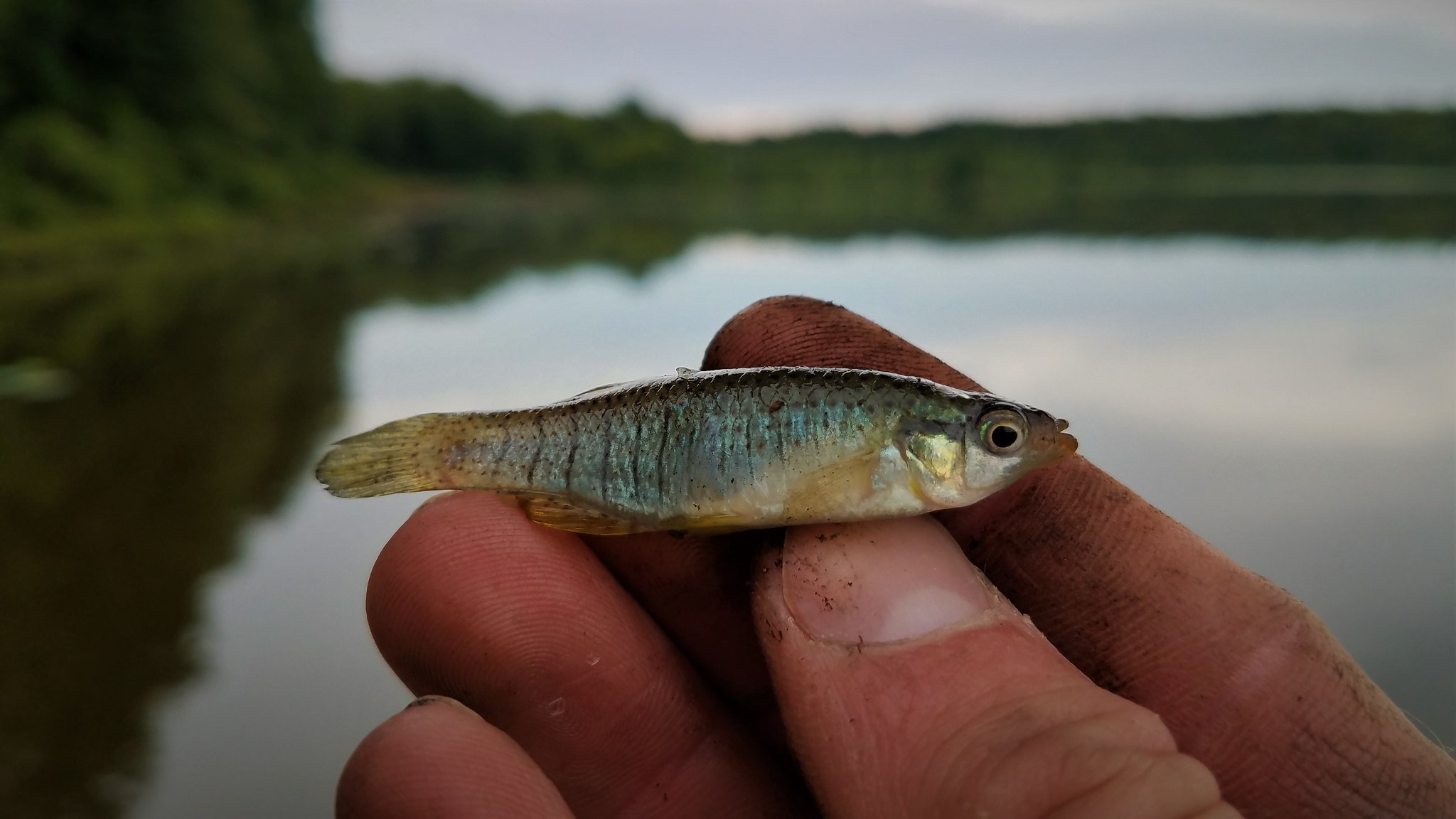Many Madison Audubon members have seen, walked, and enjoyed the restorations we have undertaken at Goose Pond, Faville Grove, and Ostego Marsh. Most are prairie and savanna restorations with some smaller wetland projects. All focus on habitat or ecosystem restoration. Another type of restoration introduces or re-introduces an endangered animal to the appropriate habitat. Madison Audubon has pursued several of those projects with my favorite being welcoming the endangered red-tailed leafhopper to the prairies of Goose Pond—mostly because of the insect's fabulous name.
Recently I read a fun and fascinating account of a successful introduction of another lovely species with a great name to new, happy, and much needed homes. Please use the following link for this story concerning the starhead topminnow. And that fish! Isn’t it a cutie?
Starhead Minnow. Photo by Isaac Morris
John Lyons and his "Topminnows For Tomorrow" team (this blog is full of great names and titles) worked incredibly hard over years on this introduction and then wrote a lively article on that process and its results. If you have to choose between reading the rest of the blog and the article, read that article.
Some comments and observations:
For me, the most serious aspect of the project is why it's necessary. The starhead topminnow is endangered in Wisconsin, and depends on the healthy sloughs of the lower Wisconsin River. Its habitat depends on clean water withsources of unpolluted groundwater. The water quality in many of those sloughs has deteriorated rapidly and significantly; that decline is probably the single, greatest reason for the endangerment of the starhead and creates the need for safe harbors for the species. The most probable reason for the destruction of the sloughs is more extensive row crops on the adjacent fields surrounding them, which are the re-charge areas for essential groundwater. and clean surface water. Sandy soils predominate in much of this area, which makes the groundwater especially susceptible to pollution. Dave Marshall, a retired DNR water quality biologist and one of the team members, researched this problem for years. So far, his pleas to protect the sloughs of the Lower Wisconsin Riverway as an essential part of that magnificent river and wetland complex have gone unheeded.
Lower Wisconsin River. Photo by Joshua Mayer
Secondly, the many details that the team had to address are staggering. Just the process of transporting the starheads involved considerable logistics and many regulatory details. Many of us probably understand how complex and difficult different sorts of restorations are but these behind the scenes details reveal how hard that work is. I think fish projects present exceptional difficulties.
One species of predaceous diving beetle, Agabus disintegratus. Photo by Douglas Mills, Flickr
For years I've read about the large, predaceous water beetles—how big, hungry, and ferocious they are. But I've never encountered anyone with extensive experience with them. Check out the photo and account of water beetle bites and their fish eating proclivities on p. 10.
One consistent topic of this blog is the great work that other conservation organizations and individuals pursue across this area. In these all too gloomy days, such news boosts my spirits. I also think it's important for Madison Audubon to be aware of environmental and conservation issues affecting key resources in our area. The Lower Wisconsin River traverses a lot of Madison Audubon territory and is a wetland of designated, international significance. It provides critical bird habitat. I bet the deterioration of those sloughs is bad for some bird species. Conversely, better conservation of the sloughs' uplands, especially if some could be converted to the appropriate natural habitat would benefit many species, birds amongst them.
Huge thanks to John and his team!
Stay healthy and get outside,
Topf Wells, Madison Audubon advocacy committee chair
Cover photo by Joshua Mayer







